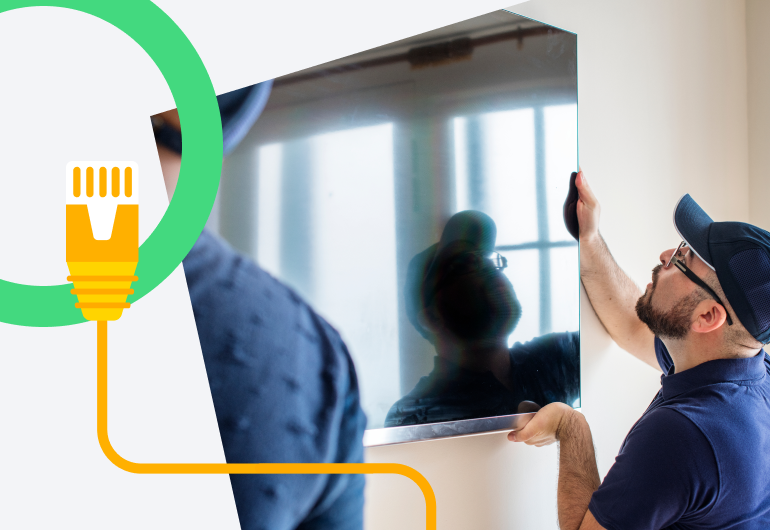For information about how Screenfluence can help your business with digital signage, please don’t hesitate to contact us by calling 1-844-772-7336 or emailing info@screenfluence.com.
Contact UsCongratulations! You have made the very wise choice to utilize digital signage throughout your place of business. Having done your research to learn of the many benefits that digital displays provide, you’re now ready to take your company to the next level. You’ve defined your digital signage marketing strategy. You’ve created captivating content to display. And you’re ready to install your digital signage and bring those screens to life.
In this guide, we’ll walk you through the essential steps to set your digital signage hardware. From TV screens to wires and cables, we cover all the equipment you need and tips for successful installation so you can get those displays up and running.
Digital Signage Installation 101: Hardware Set-Up Checklist
1. High-Definition TVs
There is a myriad of HD televisions and monitors on the market. Lucky for you, our 7 Best TV Screens For Digital Signage in 2021 blog provides you with some excellent suggestions. Here’s hoping it makes this first step easier! Naturally, your objective is to select the screen that best suits your place of business. You will want to consider size (we wouldn’t recommend anything smaller than 48 inches) and the type of content you wish to display.
LCD commercial-grade screens are often highly recommended for digital signage. They generally include heat dissipation plates and cooling. That way, they can withstand long hours of use. In many cases, people have their digital signage operating all around the clock. If this rings true for you, you should find a TV that minimizes energy use. You will also want to select a high-definition television that provides clear pictures no matter the lighting in your facility.
As well, it is vital that your TV has either an HDMI or VGA input. They enable connections to your media player (we’ll get to that in a moment). You’ll also want to get a screen that allows you to display content both horizontally and vertically.
2. A media player and its accompanying digital signage software
Once you’ve settled on the high-definition TV of your choice, you need to grab the digital signage media player that will enable you to display your content. In addition to your media player, you need the software that allows you to create your content. This is often called a content management system or CMS.
If your plan is to create completely original content, you’ll want to get an all-in-one digital signage media player and software package. This will give you full control over the images and messages you wish to display. If you’re outsourcing to have your content created for you, you should get a media player and software that is compatible with your content creator. You may even wish to get a package that includes already-made content.
3. A high-speed internet connection
This is an integral piece in your digital signage hardware installation. No matter how vivid your HD screens are or how revolutionary your media player and software package is, you need strong, stable internet to operate your screens. Specifically, a high-speed, hardwired internet connection is necessary to take full advantage of your digital signage. High-speed internet is important because many media players and their digital signage software need to provide up-to-date content and generate data reports about your displays.
By hardwiring your internet connection, you will help to avoid buffering, lag time and image pixilation. Keep this all in mind when selecting the locations for your digital displays. You don’t want to place your screens in areas where wires and cords can’t be hidden. You also want to make sure that all of your screens have easy access to power sources.
4. Power sources
Each of your digital displays needs to be plugged into a power source. This may be obvious, but it bears repeating. Many people forget about this all-important step when deciding upon their screens of choice and where to mount them. The most ideal of locations for your displays are areas where access to both your internet connection and power sources is easy.
Successful digital signage installation and hardware set-up needs planning ahead and making strategic choices about display locations, content types and electrical set-ups. It may seem difficult to account for all these details when installing your digital displays. Screenfluence’s digital signage experts are here to help you every step of the way. From choosing your hardware to creating content for your screens, our team can provide you with recommendations that make your digital signage strategy a success. Talk to us today to learn more.


